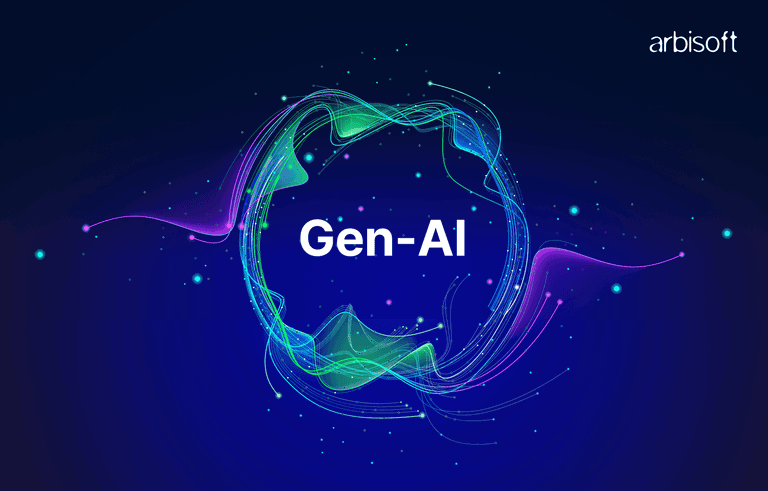We put excellence, value and quality above all - and it shows




A Technology Partnership That Goes Beyond Code

“Arbisoft has been my most trusted technology partner for now over 15 years. Arbisoft has very unique methods of recruiting and training, and the results demonstrate that. They have great teams, great positive attitudes and great communication.”
What Steps Are Essential to Master Predictive Analytics in 2025? A Complete Guide for CTOs

I’ve seen too many CTOs charge ahead into AI predictive analytics like it’s a race. But trust me, without a map, you’re just spinning wheels in a data storm.
The predictive analytics market hit $22.22 billion in 2025. Forecasts peg it at $91.92 billion by 2032. That’s exciting, sure. But don’t be fooled. Most projects flop not because the tech fails, but because planning does.
The Critical Pain Points CTOs Face with Predictive Analytics Implementation
We’ve talked about the growth. Now let’s dig into the real blockers that trip CTOs up.
Legacy System Integration Challenges
Legacy systems are like grandma’s antique phone. Still rings, but try texting on it. Nearly 75% of enterprise data sits in disconnected silos. Integrating new predictive analytics solutions with old infrastructure? It’s chaos if you don’t have the right tools.
That’s where iPaaS comes in. Modern integration platforms with drag-and-drop features simplify what used to be a nightmare. You don’t need to rip out your old system. You just need smarter pipes.
Data Quality and Governance Issues
Garbage in, garbage out. Bad data? Even the best predictive modeling techniques won’t save you.
I’ve watched companies pour millions into AI predictive analytics and get zilch in return. Why? Dirty data. Data governance isn’t a boring box-ticking exercise. It’s the frontline defense of every predictive analytics implementation. If your data’s a mess, your insights will be too.
Analytics Talent Shortage Crisis
This one hurts. Even the sharpest tools need good hands.
In 2025, nearly 75% of companies report struggling to hire analytics talent. And the cost? A whopping $3.8 trillion globally. You can’t fake your way through this. If you want great results, you need great people. Or the right predictive analytics consultants.
The Urgent Need for Enterprise-Grade Predictive Analytics Solutions
Now that we’ve unpacked the headaches, let’s explore why mastering predictive analytics for business isn’t optional anymore.
Competitive Pressure and Market Demands
If you’re not using predictive analytics in business, you’re flying blind. And in 2025, the weather’s rough.
Today’s organizations must respond to market changes in real time. Customers expect personalization. Stakeholders demand foresight. Predictive analytics solutions let you see what’s coming and act before it lands.
Digital Transformation Mandates
Governments tighten compliance rules. Cyber risks loom large. Customer expectations shoot through the roof.
Sectors like finance and healthcare rely on predictive analytics solutions to meet these demands. From fraud detection to patient risk modeling, it’s no longer a nice-to-have. It’s survival.
ROI Expectations from Stakeholders
Stakeholders want results yesterday.
Here’s the thing. Predictive analytics isn’t just smart, it’s profitable. Financial firms see up to 500% ROI within a year. That’s not hype. That’s the power of data driven decision making when done right.
You’re sold on the “why.” Now let’s talk “how.”
Essential Steps to Master Predictive Analytics in 2025
I’ve boiled it down to eight essential steps. Here’s a breakdown.
Step 1: Define Strategic Objectives and Use Cases
You wouldn’t build a bridge without knowing where it leads. Same here.
Start with a clear business question. Want better sales forecasting? Lower churn? Great. Define KPIs tied to those goals. Involve your data scientists, marketers, ops folks. Everyone with skin in the game.
Predictive analytics for business works best when the entire team is aligned on what matters.
Step 2: Assess Current Data Infrastructure and Quality
This step makes or breaks everything.
Audit your existing systems. Is your data clean? Complete? Timely? If not, fix it before you model anything. Outliers, missing values, duplicates. They’ll sink your predictive analytics algorithms.
And don’t skip governance. You need standards. You need compliance. You need audit trails.
Step 3: Select the Right Predictive Analytics Solutions and Vendors
Tool time.
There’s no one-size-fits-all vendor here. Look for predictive analytics companies that offer scalable infrastructure, strong integrations, and explainable AI.
Vendor selection criteria should include technical capabilities, model explainability, and support. Want fast deployment? Consider cloud-based predictive analytics solutions. Just don’t marry a platform that won’t grow with you.
Step 4: Build Your Analytics Team Strategy
Let’s talk people.
Can’t find a unicorn with ten years of TensorFlow and fluent Python? Join the club. Reskill your current staff. Bring in career switchers. Outsource where needed. Especially early on.
Some of the best results I’ve seen came from predictive analytics consultants brought in for heavy lifting while internal teams ramped up.
Step 5: Choose Appropriate Predictive Modeling Techniques
The fun stuff. But don't let the jargon fool you.
Logistic regression, decision trees, gradient boosting. They all have their place. The trick is knowing which predictive modeling techniques match your use case.
Trying to predict customer churn? Classification models work well. Forecasting sales? Regression it is. Don’t overlook AutoML for faster, more accessible model building.
Step 6: Develop a Comprehensive Implementation Roadmap
Predictive analytics implementation isn’t a weekend project.
Start small. Run pilot models. Validate results. Then scale. Containerization tools like Docker and Kubernetes let you deploy flexibly. Keep IT in the loop from day one. This avoids nasty surprises later.
You want models that not only work but plug right into your business workflow.
Step 7: Establish Data-Driven Decision Making Processes
Here’s where the rubber meets the road.
It’s not enough to build great models. You need to use them. Embed insights into daily decisions. Train business users. Use dashboards. Use alerts.
Predictive analytics in business only works if people trust and use the insights.
Step 8: Monitor, Optimize, and Scale Your Analytics Platform
You’re not done.
Track ROI. Measure model accuracy. Retrain regularly. Scale across departments.
Use tools like Prometheus to keep an eye on performance. Predictive analytics solutions that can’t evolve quickly are dead weight. Build systems that grow with you.
At this point, you’re probably thinking, “Sounds doable. But what about the curveballs?”
Overcoming Common Challenges in Predictive Analytics
No surprise. Implementation never goes 100 percent smoothly. But forewarned is forearmed.
Technical Integration Hurdles
Getting systems to talk is half the battle.
Predictive analytics companies often underestimate the pain of integration. Use modern tools with prebuilt connectors. Skip the spaghetti code. You’ll thank yourself later.
Change Management and User Adoption
Predictive insights are only useful if people actually use them.
That means training. Internal marketing. Data literacy. Show them the value. Build dashboards that speak their language. Let results win hearts and minds.
Ensuring Model Accuracy and Reliability
AI implementation is tricky when no one trusts the output.
Explainability isn’t optional. Predictive analytics algorithms need to be transparent. Show the logic behind results. Keep updating. Keep communicating.
Now, let’s switch gears and talk about what success looks like.
Measuring Success: Benefits of Predictive Analytics for Enterprise CTOs
When everything clicks, you’ll see big wins. And fast.
Operational Efficiency Improvements
Predictive analytics helps you spot breakdowns before they happen. In manufacturing, this slashes downtime. In banking, it stops fraud. One client I worked with cut incident response time in half. That’s impact.
Revenue Growth and Cost Reduction
Using predictive analytics for business isn’t just about insight. It’s about action. Credit scoring becomes sharper. Campaigns get smarter. Supply chains run leaner.
Every department benefits. And every dollar saved counts.
Enhanced Strategic Decision Making
Forget reacting. With predictive analytics, you act ahead of the curve.
Real-time insights guide fast decisions. Long-term forecasts shape strategy. And data driven decision making becomes second nature.
Let’s wrap up with what’s coming next.
Future-Proofing Your Predictive Analytics Strategy
Stay still and you’ll fall behind. Here’s what’s on the horizon.
Emerging Trends in AI and Machine Learning
Edge computing means models now run on devices. Not just data centers. AutoML tools keep getting smarter, more customizable, and easier to use.
Even non-technical folks are getting in on the game. That’s a good thing.
Preparing for Advanced Analytics Capabilities
Privacy-first AI is gaining ground. Think federated learning and differential privacy. Predictive analytics companies are finally waking up to the compliance wave.
Also watch neuro-symbolic AI. It blends rules with neural networks. It’s got promise.
Building Sustainable Analytics Competencies
You can’t outsource your brain forever.
Build internal teams. Focus on explainability. Train people to think with models. In 2025 and beyond, the winning companies will be the ones who own their analytics muscle.
Conclusion: Your Path to Predictive Analytics Mastery
This isn’t about buying fancy tools or hiring a guru. Mastering predictive analytics means strategy, systems, and stamina.
Start with clear goals. Clean your data. Build the right team. Choose tools wisely. Measure everything. Iterate often.
Because in 2025, predictive analytics isn’t a luxury. It’s a leadership skill.
























